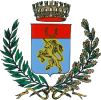Cassano allo Ionio


Cassano allo Ionio, one of the biggest towns in the Ionian, is in the foothills of Pollino and the Plain of Sybaris.
Its origins are ancient. Early called Cossa, it extended on the north-west slopes of Marzio Mountain, now called Pietra del Castello. Until the founding of the city of Sybaris, around 702 BC, Cassano allo Ionio was under the domination of Enotri, an italic group settled in Apulia, Basilicata and the northern part of Calabria. Subsequently, the town came under the power of Sybaris, a greek colony, and for centuries it followed its shifts. When residents of Croton destroyed Sybaris, in fact, also Cassano was razed. When Greeks rebuilt Sybaris, renaming it Thurio, also the walls of Cassano were rebuilt. Same fate for the next domains: when Sybaris passed in the roman possessions and was renamed Copia, also Cassano became a roman municipality.
When the Roman Empire fell, the town was conquered by the Lombards who changed its name in Cassanum and chose it as civil, military and judiciary stewardship place and bishopric centre. In the Middle Ages was the scene of many battles, it was first occupied by Saracens (expelled in 1014, finally conquered it in 1037) and then by the Normans. In 1284, it became a fief of the Anjou, property of Icerio De Mignac and, later, it came under the power of many other local noble families, including Sanseverino, princes of Bisignano.
Today, Cassano allo Ionio, because its beautiful historical city centre, its noble palaces, ancient churches and thermal baths, is an interesting tourist destination also for its landscape aspect and seaside resorts. Among the many attractions there is Pietra del Castello (Castle Stone), so called because the presence of the ruins of a norman ducal castle and now place of a clock tower dating 1776. Another important place is the impressive site of Grotte di Sant’Angelo, in those caves, during the Neolithic Age, the first italic population of the area lived. These caves have naturalistic, archaeological and speleological interest and are some of the most beautiful caves in the territory of Monte Astrolomo, near Cassano. Probably they cross the entire village and, after half a mile, they link to Follea’s caves.